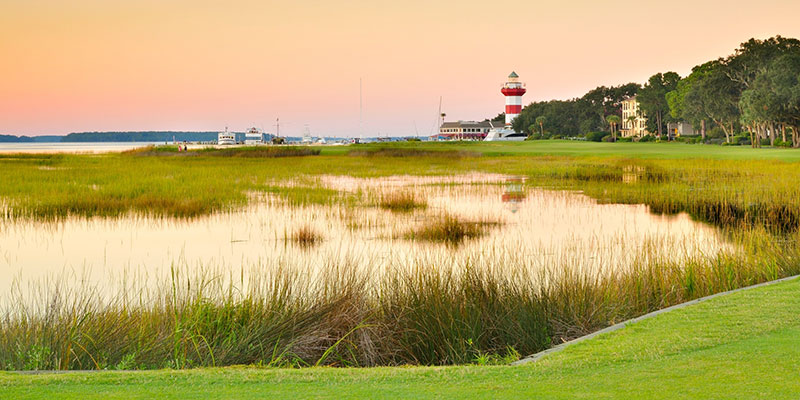Seawater is intruding on Hilton Head Island in South Carolina, threatening its freshwater aquifers. Reusing wastewater and desalination can help alleviate the problem.
Seawater is rapidly intruding into coastal aquifers, but alternative water sources can slow its progress
On the East Coast of the United States, seawater is creeping inland, contaminating fresh water in underground aquifers. This intrusion is not uncommon. Since salt water has a higher density than fresh, it sinks to the bottom of the water table, often without affecting the fresh water above. However, when the freshwater volume decreases substantially, it can change the fluid pressure, drawing seawater into the aquifers. Salt water then can mix with fresh, making it unfit for consumption.
Salt is considered a drinking water contaminant because at high levels, it can pose health risks, such as hypertension and increased chance of stroke.
Saltwater intrusion is exacerbated by sea-level rise and groundwater extraction. Rising sea levels are pushing seawater further inland, and pumping fresh water from aquifers leaves a void that is filled by the salt water. A 2012 study found that coastal aquifers are more vulnerable to groundwater extraction than to rising sea levels.
For example, at Hilton Head in South Carolina, saltwater intrusion is spreading westward at a rate of 400 feet a year, threatening to intrude into several wells by 2024, making them unusable. Monitoring of wells from Maine to Georgia shows that saltwater intrusion is occurring faster in Southeastern states, with Maryland expecting to see a 15% increase in salinity in coastal aquifers by 2025.
While the amount of fresh water in coastal aquifers is shrinking, the demand for that water is not. Measures must be taken soon to meet the demand and to stop saltwater intrusion.
Reusing Water Is One Solution
Turning to alternative water supplies could help. Recycling water to use for irrigation reduces the demand on groundwater supplies. Fluence offers an energy-efficient and cost-effective solution that uses innovative membrane aerated biofilm reactor (MABR) technology with passive aeration to treat wastewater, rendering it safe to irrigate crops, parks, lawns, golf courses, and other recreational facilities. That reduces the need to pump groundwater from aquifers, maintaining their integrity and blocking salt water from entering.
Wastewater treated with MABR technology also can be injected into coastal aquifers, boosting the freshwater supply, and preventing saltwater intrusion.
Desalination Is Another Answer
Another way to alleviate saltwater intrusion is desalination. It addresses both water quality and supply. Removing salt can make brackish water potable, and treating seawater provides an alternate source of drinking water, which would take pressure off groundwater supplies.
Fluence’s NIROBOX™ desalination plants use advanced technologies to produce safe drinking water from brackish groundwater or seawater. Unlike conventional desalination plants, which require much energy and large tracts of land, Fluence’s NIROBOX™ solutions are compact, modular, and energy-efficient. Not only do they have a small footprint, they are portable, meaning that should the saltwater intrusion be resolved at one site, the same plant can be deployed to another site.
To learn more about how you can recycle wastewater, desalinate seawater, or treat brackish water, contact Fluence. Our experts can help you find the best solution for your needs.

